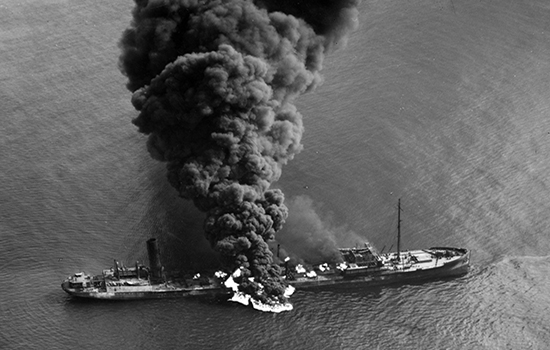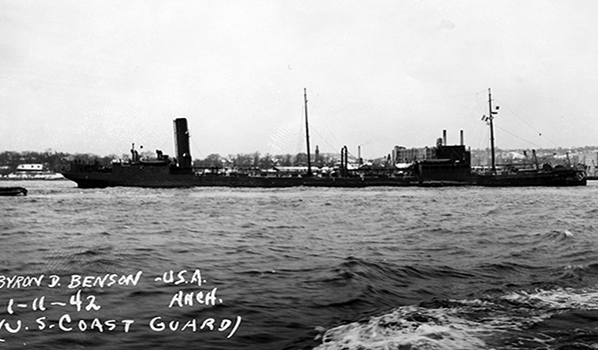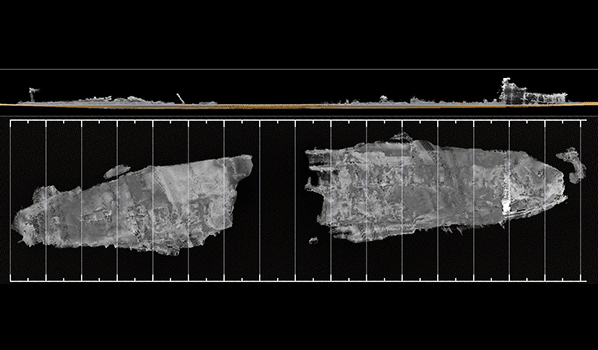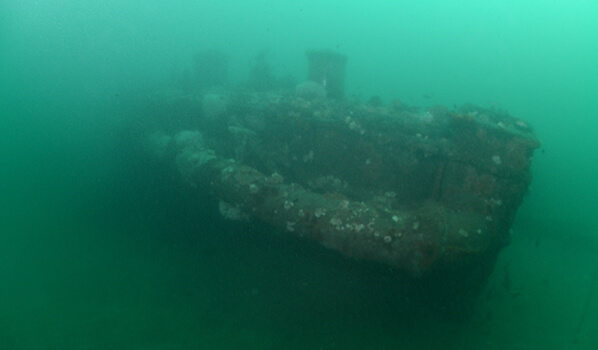Byron D. Benson
Ship Stats
Location: 36°8'57.77"N, 75°14'41.57"W (36.14938, -75.24488)
Depth: 105 feet
Vessel Type: Tanker
Length: 465 feet Breadth: 60.2 feet
Gross Tonnage: 7,953 Cargo: 91,500 barrels of crude oil
Built: 1922, Oscar Daniels Company, Tampa, Florida, USA
Hull Number: 12 Port of Registry: Wilmington, Delaware, USA
Owner: Tide Water Associated Oil Company, New York, New York, USA
Lloyd's Register Details: Steel hull, steam screw, single screw, 2 decks and shelter deck, machinery aft, oil-fired steam, quadruple-expansion four-cylinder steam engine, Engine 2800 IHP, flat keel
Former Names: N/A
Date Lost: April 5, 1942
Sunk By: U-552 Survivors: 27 of 37 survived (10 dead)
Data Collected on Site: High resolution multibeam
Significance: Casualty of World War II's Battle of the Atlantic
Wreck Site
Byron D. Benson is broken amidships and rests in approximately 105 feet of water. The vessel is located in an area subjected mostly to temperate waters and typically has lower visibility than other sites. The site was leveled as a navigation hazard and a relatively flattened base of the hull and debris field remain. Some features are discernable, particularly the completely burned out midsection where the concentration of the fire, caused by the torpedo, is seen burning in historic images.
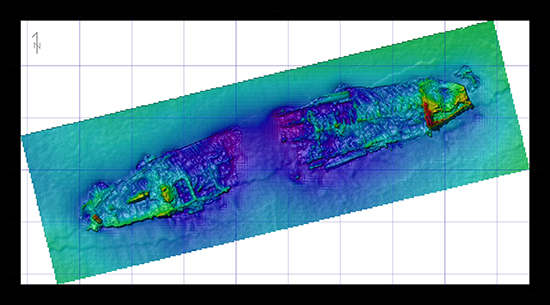
Historical Background
In late March of 1942, the tanker, Byron B. Benson, had delivered 100,000 barrels of oil in Texas before making a solo journey up the East Coast to New Jersey. Traveling north with a cargo of crude oil, Bryon D. Benson began its journey alone and in early April, it eventually joined a small convoy of vessels off the coast of North Carolina. The convoy group included another tanker, Gulf of Mexico, and two escorts, USS Hamilton and HMS Norwich City.
On the night of April 5, 1942, the convoy slowly moved north, all the while being stalked by U-552. U-552 moved in to attack the convoy as it traveled north past Kill Devil Hills, North Carolina. A torpedo struck Byron B. Benson on the starboard side amidships and, almost immediately, the crude oil cargo gushed from the opening and fire spread quickly.
The crew was ordered to abandon ship, but with the loss of the starboard side lifeboats, the remaining boats were overfilled. Amid panic to abandon the burning ship, the engines were never shut down, allowing Byron B. Benson to continue to make way while the crew attempted to escape. In spite of many difficulties, 27 of the 37 crewmembers aboard survived the attack and were taken to Norfolk, Virginia. While the attack and the resulting chaos took place in a matter of minutes, Byron D. Benson did not sink for three days.
